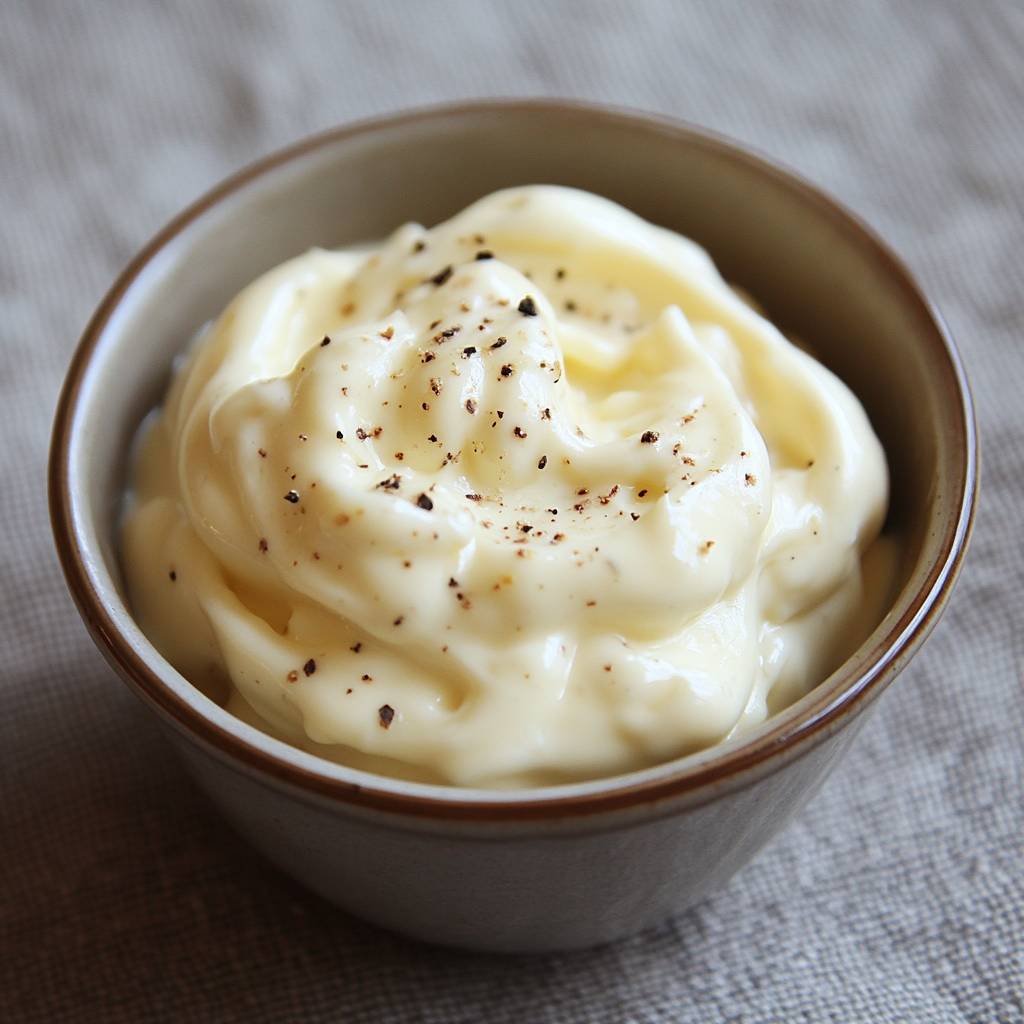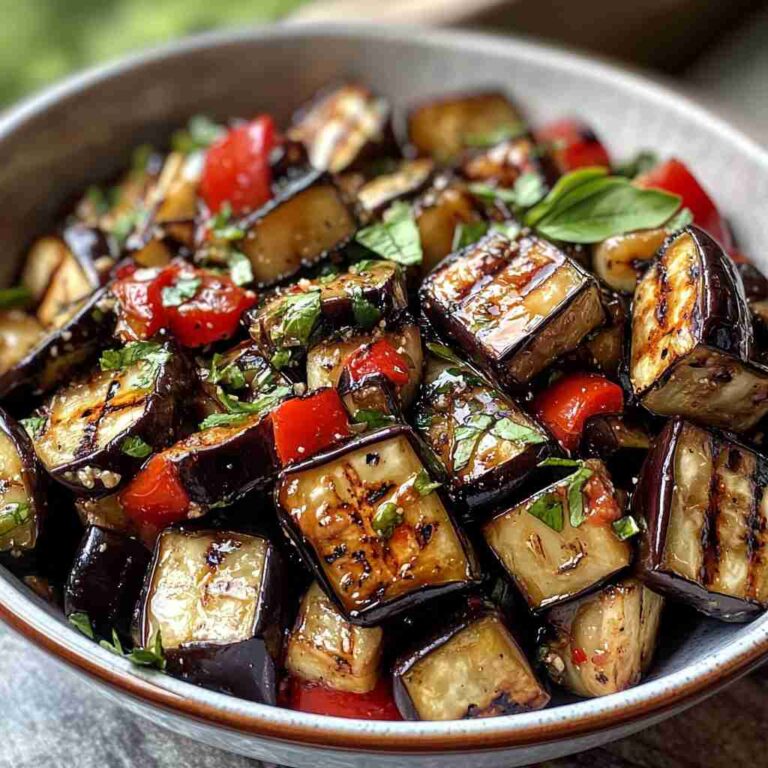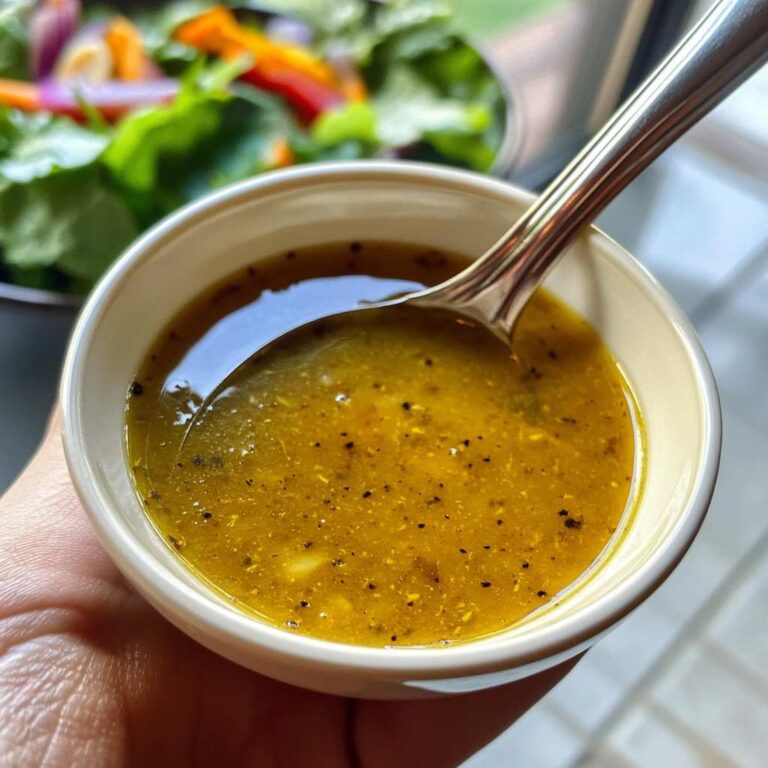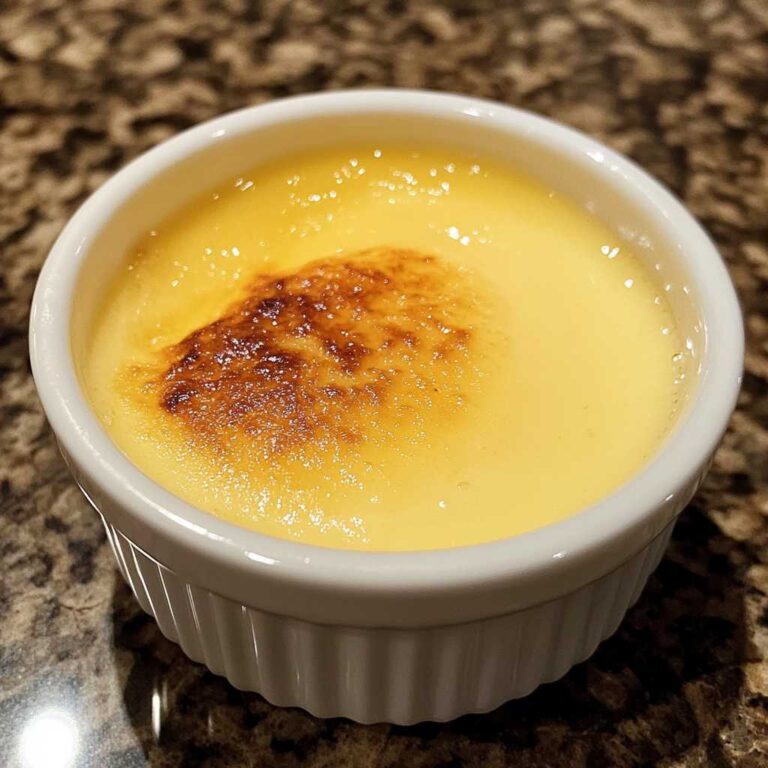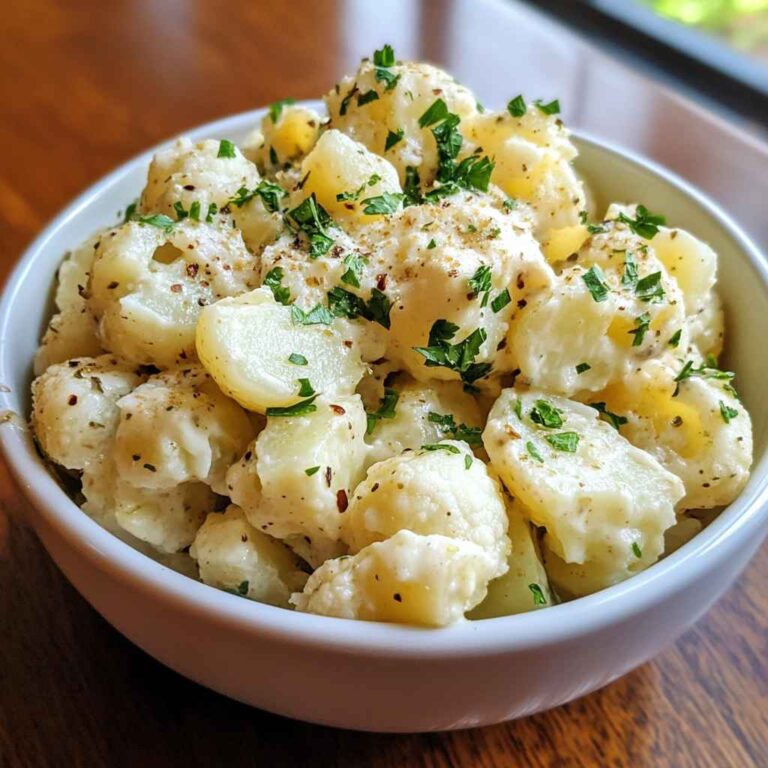Homemade mayonnaise is a revelation once you’ve tasted it. The silky, rich texture and bright, tangy flavor simply can’t be replicated by store-bought versions. And contrary to popular belief, it’s remarkably simple to make at home with just a few basic ingredients. In this guide, you’ll learn the secrets to crafting the perfect homemade mayonnaise recipe that will transform your meals and elevate your culinary skills.
Imagine drizzling your salads with a luscious, homemade dressing, slathering your sandwiches with a creamy, tangy spread, or dipping your crispy fries into a heavenly, homemade aioli. The possibilities are endless when you have the power of fresh, homemade mayonnaise at your fingertips. Get ready to say goodbye to bland, store-bought mayo and hello to a whole new world of flavor and texture.
This recipe is a game-changer, not just because of the superior taste, but also because of how quick and easy it is to prepare. With just a few minutes of active time, you’ll be rewarded with a jar of pure, creamy bliss that will elevate any dish. So let’s dive in and unlock the secrets to creating the perfect homemade mayonnaise recipe that will have your taste buds singing with joy.
🎯 What Sets This Amazing Recipe Apart?
What makes this homemade mayonnaise recipe truly exceptional? It all comes down to the perfect balance of ingredients and technique. Unlike store-bought mayonnaise, which can often taste overly processed or acidic, this recipe yields a mayonnaise that is silky-smooth, lusciously creamy, and bursting with a bright, tangy flavor that perfectly complements a wide range of dishes.
The key to this recipe’s success lies in the careful ratio of egg yolks, high-quality oil, and a touch of acid (in the form of lemon juice or white wine vinegar). By slowly and gently emulsifying these ingredients, you’ll end up with a mayonnaise that is thick, rich, and remarkably stable – no more worrying about your mayonnaise separating or becoming watery. Plus, the inclusion of a pinch of mustard powder adds a subtle complexity that takes this homemade mayonnaise to the next level.
Ingredients
• 1 teaspoon Dijon mustard
• 1 teaspoon lemon juice or white wine vinegar
• 1/4 teaspoon sea salt
• 1 cup (240ml) neutral-flavored oil (such as grapeseed, avocado, or vegetable oil)
The key ingredients in this recipe are the egg yolks and the type of oil used. The egg yolks provide the essential emulsifying properties that give mayonnaise its thick, creamy texture. Be sure to use fresh, high-quality eggs for the best results. As for the oil, a neutral-flavored variety like grapeseed, avocado, or vegetable oil works best, as it allows the tangy, eggy flavors of the mayonnaise to shine.
Instructions
- Gather the Ingredients: Ensure all your ingredients are at room temperature before you begin. This will help the emulsion come together more easily.
- Prepare the Workstation: Set up a clean, stable surface to work on, and have all your tools ready – a medium-sized bowl, a whisk or immersion blender, and a measuring cup or jug for the oil.
- Start the Emulsion: In the medium bowl, whisk together the egg yolks, Dijon mustard, lemon juice or vinegar, and salt until well combined and slightly thickened.
- Slowly Incorporate the Oil: Begin adding the oil, a few drops at a time, while continuously whisking or blending. This slow, steady addition of the oil is crucial for creating a stable emulsion.
- Increase the Oil Slowly: Once the mayonnaise starts to thicken, you can begin adding the oil in a slow, steady stream, while still whisking or blending constantly. The key is to incorporate the oil slowly and steadily to prevent the emulsion from breaking.
- Achieve the Desired Consistency: Continue adding the oil until the mayonnaise reaches your desired thickness and creaminess. The total amount of oil used may vary slightly depending on the size of your egg yolks.
- Adjust the Seasoning: Taste the mayonnaise and adjust the seasoning with more salt, lemon juice, or vinegar, if desired. The flavors should be well-balanced – tangy, creamy, and delicious.
- Chill and Serve: Transfer the homemade mayonnaise to an airtight container and refrigerate until ready to use, up to 1 week. Enjoy your perfect, creamy homemade mayonnaise on sandwiches, salads, and more!
Timing Overview
• Cook time: 0 minutes
• Chill time: 30 minutes
• Total Time: 35 minutes
Nutritional Information
Nutritional information is an estimate per serving, based on 12 servings.
• Protein: 0.3 g
• Sodium: 125 mg
• Carbohydrates: 0.1 g
• Fat: 24.9 g
• Fiber: 0 g
💡 How to Customize This Recipe ?
• To Make it Vegan: Unfortunately, this recipe cannot be made vegan, as it relies on egg yolks as the essential emulsifier. You would need to use a different type of emulsifier, such as aquafaba (chickpea liquid) or commercial vegan mayonnaise, to create a plant-based version.
• To Add a Spicy Kick: For a spicy twist, you can add a pinch of cayenne pepper or a teaspoon of hot sauce to the mayonnaise. Incorporate it in the final step and adjust the seasoning to your liking.
🎉 Elevate Your Meal with These Serving Tips
• Garnish Suggestions: Garnish your dishes with a dollop of homemade mayonnaise, a sprinkle of paprika or chopped fresh herbs, and a squeeze of lemon juice.
• Beverage Pairing: This versatile mayonnaise pairs well with a crisp, chilled white wine or a refreshing lemonade for a light and balanced meal.
❗ Pro Tips for a Perfect Outcome Every Time
• Mistake 2 – Adding the Oil Too Quickly: Rushing the process of slowly incorporating the oil is a common mistake that can cause the mayonnaise to break and become thin and watery. Take your time and add the oil slowly and steadily.
• Mistake 3 – Overmixing: While it’s important to whisk or blend constantly, be careful not to overmix the mayonnaise once it has reached the desired consistency. Overmixing can cause the emulsion to break down.
🕒 A Guide to Storing for Later
• Freezing: Homemade mayonnaise does not freeze well, as the emulsion can break down during the freezing process. It’s best to consume it within a week of making it.
• Reheating: There is no need to reheat homemade mayonnaise. Simply give it a quick stir before using, as the ingredients may separate slightly during storage.
❓ FAQs
Can I use a blender or food processor instead of whisking by hand?
Absolutely! Using an immersion blender or a regular blender is a great way to make homemade mayonnaise, as the powerful blades help to create a smooth, creamy emulsion quickly and easily. Just be sure to add the oil slowly, as with the hand-whisking method, to prevent the mayonnaise from breaking.
What can I do if my mayonnaise starts to separate?
If your mayonnaise begins to separate or look thin and watery, don’t panic! You can often rescue it by starting with a new egg yolk in a clean bowl and slowly whisking or blending the separated mayonnaise into the new yolk. The fresh yolk will help re-emulsify the mixture and bring it back to a thick, creamy consistency.
Can I make this recipe with a different type of oil?
While neutral-flavored oils like grapeseed, avocado, or vegetable oil work best for this homemade mayonnaise recipe, you can experiment with other types of oil if you prefer. Just keep in mind that using a strongly flavored oil, like olive oil, can overpower the delicate balance of flavors. Start with a smaller amount of the stronger oil and adjust to your taste.
How long does homemade mayonnaise last?
Properly stored in an airtight container in the refrigerator, homemade mayonnaise will keep for up to 1 week. The high fat content and acidity from the lemon juice or vinegar help preserve the mayonnaise and prevent the growth of harmful bacteria. However, it’s always best to use your senses – if the mayonnaise smells off or has a sour taste, it’s time to discard it.
Can I make this recipe with just egg whites instead of yolks?
Unfortunately, no. Egg yolks are the essential emulsifying agent in mayonnaise, and using just egg whites will not result in the same thick, creamy texture. Egg whites lack the fat and lecithin content that allows the oil and other ingredients to bind together to form a stable emulsion. Stick to using high-quality egg yolks for the best homemade mayonnaise results.
⭐ Final Thoughts on This Amazing Recipe
Homemade mayonnaise is a true revelation once you’ve tasted it. This simple recipe, with its perfect balance of flavors and velvety-smooth texture, will forever change the way you view store-bought mayo. Not only is it remarkably easy to make, but the results are simply out of this world. Imagine the possibilities – drizzle it over roasted vegetables, use it as a dip for crispy fries, or spread it on your favorite sandwiches for an extra burst of tangy, creamy goodness.
The best part? This homemade mayonnaise recipe is endlessly customizable. Experiment with different herbs, spices, or even a touch of sweetness to make it your own. No matter how you serve it, one thing is certain: your taste buds are in for a real treat. So what are you waiting for? Grab your whisk (or blender) and get ready to experience the magic of perfect, homemade mayonnaise.
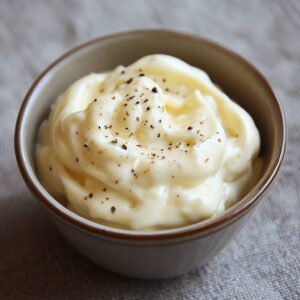
The Perfect Homemade Mayonnaise Recipe
⏱️ Timing Overview
🥘 Ingredients
📝 Instructions
- Ensure all your ingredients are at room temperature before you begin. This will help the emulsion come together more easily.
- Set up a clean, stable surface to work on, and have all your tools ready – a medium-sized bowl, a whisk or immersion blender, and a measuring cup or jug for the oil.
- In the medium bowl, whisk together the egg yolks, Dijon mustard, lemon juice or vinegar, and salt until well combined and slightly thickened.
- Begin adding the oil, a few drops at a time, while continuously whisking or blending. This slow, steady addition of the oil is crucial for creating a stable emulsion.
- Once the mayonnaise starts to thicken, you can begin adding the oil in a slow, steady stream, while still whisking or blending constantly. The key is to incorporate the oil slowly and steadily to prevent the emulsion from breaking.
- Continue adding the oil until the mayonnaise reaches your desired thickness and creaminess. The total amount of oil used may vary slightly depending on the size of your egg yolks.
- Taste the mayonnaise and adjust the seasoning with more salt, lemon juice, or vinegar, if desired. The flavors should be well-balanced – tangy, creamy, and delicious.
- Transfer the homemade mayonnaise to an airtight container and refrigerate until ready to use, up to 1 week. Enjoy your perfect, creamy homemade mayonnaise on sandwiches, salads, and more!

